The Korean mask-dance tradition known as talchum was entered into the UNESCO Representative List of the Intangible Cultural Heritage of Humanity in December of last year. This achievement was a result of longstanding dedicated efforts made by the Cultural Heritage Administration in close cooperation with mask-dance masters and other stakeholders. Talchum is a multifaceted form of performing art that has long been beloved by Korean people. Several local variants of talchum were supported under government safeguarding systems in the 1960s as the national heritage protection system started to take form. Now, this time-honored Korean tradition has finally gained organizational recognition in the international community.
Luck-calling Ritual
It is believed that what is today known as talchum has its roots in ancient rituals worshipping masks as a means to wish for peace and prosperity. The tradition of imbuing masks with sacredness remains within today’s talchum practices as performers set their masks on a ritual table before the start of a performance and pray for success. This association between masks and prayers for inviting luck and chasing away bad spirits has persisted through most of the tradition’s history. For example, a form of mask dance developed about 1,100 years ago in the Silla Kingdom to commemorate Cheoyong, a legendary figure whose dance was believed to drive away evil forces spreading disease. Approximately 900 years ago, during the Goryeo Dynasty, the royal court had mask-wearing performers conduct a ritual for dispelling evil spirits on the last day of the year in a ceremony known as a narye. During the Joseon Dynasty (1392–1910), the mask-dance tradition also took on the role of airing conflicts among individuals or groups within society. Talchum performances also began to address the fated cycle of human life starting with sex, progressing to birth, and ending with death. This change in the subject matter of talchum accentuated the entertaining elements within the tradition.
From High to Popular Culture
Mask dance had long stood as a performance reserved for the upper echelons of society. From the sixth century well into the Joseon Dynasty era, mask-dance events centered around a structure imitating a mountain, known as a sandae, were organized on a grand scale by the royal court as a celebration to welcome diplomatic missions from abroad. In 1634, the sandae tradition was halted, leaving many mask-dance performers without the stable income they had received from these royal performances. This required them to carry out performances independently. Masked dancers who once put on shows for royal audiences began to stage performances for the lower ranks of society. The preferred space for talchum performances was markets where large numbers of people gathered for exchanges and communication.
Mask dance troupes secured financial support from affluent yangban aristocrats and successful merchants. They contributed to strengthening the sense of belonging within society by offering an opportunity to gather together in an exciting atmosphere. Their satire of privileged groups such as Buddhist monks and the aristocracy, helped talchum appeal to commoners. In this way, talchum developed into a popular form of performing art across the country from the 18th century.
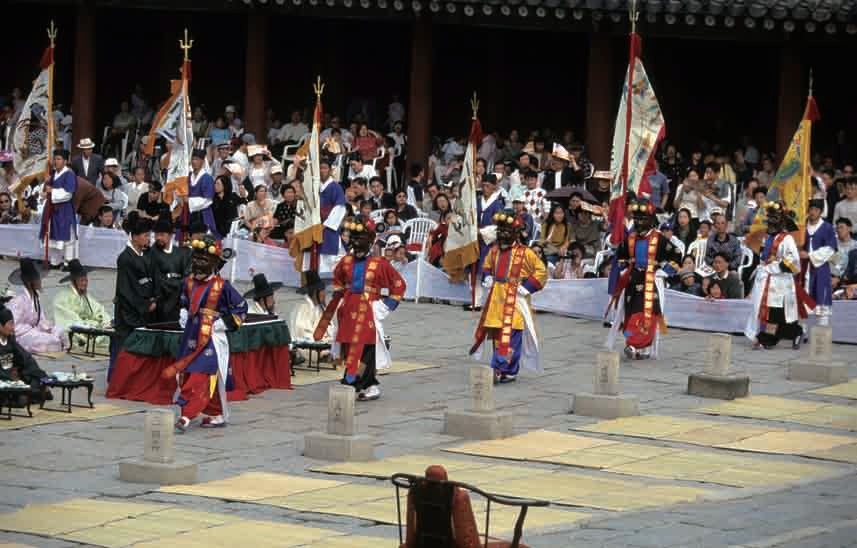
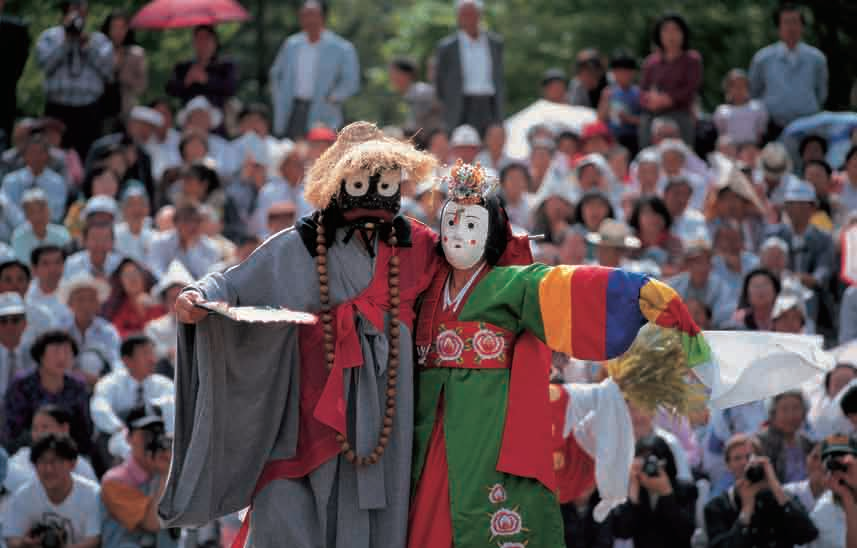
Government-led Protection
The talchum tradition has been actively transmitted to the present despite adverse historical events such as Japanese colonial rule (1910–45) and the Korean War (1950–53). Among the local talchum traditions scattered across Korea, 14 variants have been registered on the national intangible heritage list. Including those placed on the local lists, the number of talchum variants benefitting from government protection reaches more than 20.
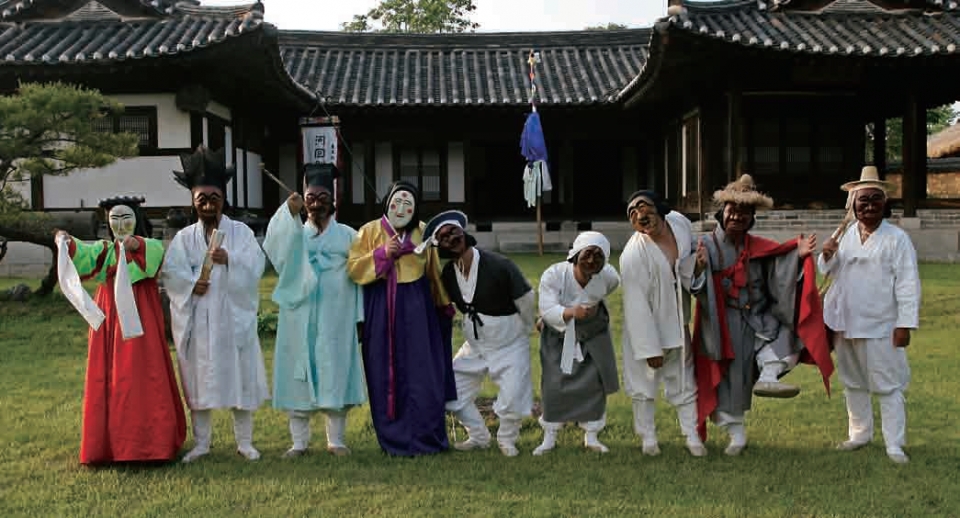
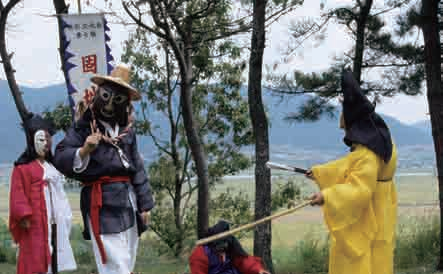

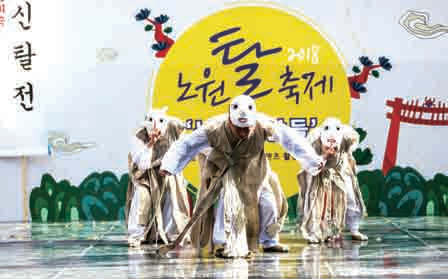
The government of the Republic of Korea began its efforts to safeguard talchum as early as in the late 1950s. It hosted an annual event known as the National Folk Arts Competition to identify various mask-dance traditions from across the country. In the 1960s, a government-led protection system was institutionalized for talchum and other intangible heritage elements. The efforts of local talchum safeguarding associations should be noted as well. With official protection systems in place, talchum safeguarding associations have made considerable progress in reviving once-lost dance moves, preparing manuals, and offering transmission education. Thanks to these efforts, talchum maintains a great vitality in the present. As an example, a whopping 40,000 practitioners have received training by the safeguarding association for the tradition known as Goseong Ogwangdae. The safeguarding association for another talchum variant called Hahoe Byeolsinguk Talnori averages more than 400 performances per year. Another aspect of talchum worth noting is the critical role played by university students in its transmission. In the 1970s, university talchum clubs mushroomed nationwide and had a great impact on the revitalization of this time-old tradition. University students would create new talchum dramas to express and refine their critical opinions on society. It was a rare example of a student movement leading the way in reviving an old tradition. In the 1990s, talchum festivals were adopted by local governments as a popular means to present and promote local folk culture.
Beyond the Prejudices of the Past
In response to the social and cultural shifts taking place over time, talchum has undergone its own changes, including many considered to be for the better. The traditional form of talchum practiced from the 18th through the 19th centuries was limited by the constraints of feudalism, such as all-male casts, sexually abusive dialog, and prejudicial perceptions of social minorities. Today, women actually make up a greater proportion of performers. Gender-blind casting is also practiced, allowing female performers to portray male characters and vice-versa. Efforts are vigorously underway to come up with dialog respecting gender equality and human rights. The common character known as Leper was only presented in talchum plays in the past as a figure shackled by his physical limitations. These days, the persona has been reinterpreted as a proactive character who is willing to move beyond physical disadvantages to achieve his goals.
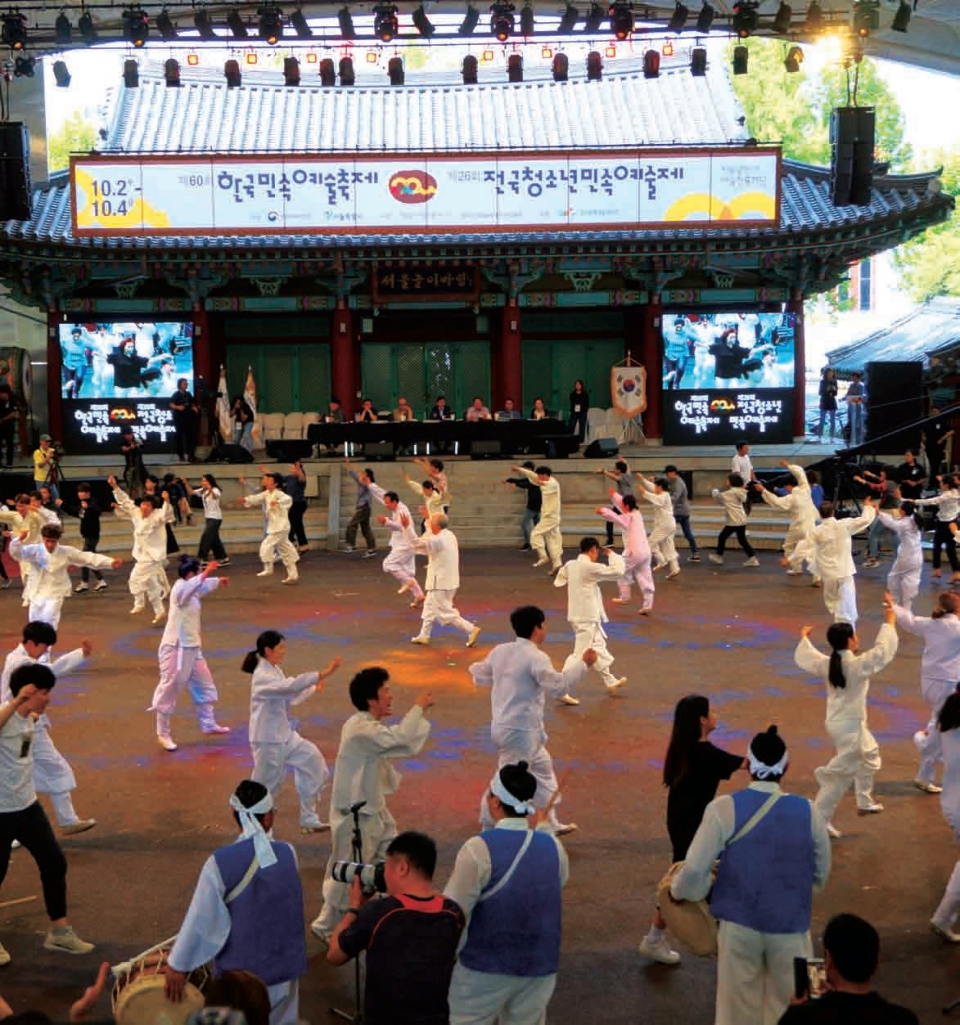
Ongoing Changes for a Better Future
As talchum has now become a recognized performing art for a wider range of humanity, this mask-dance tradition from Korea must make further efforts to tune in to the needs of today’s global audiences. Many of the customary themes and methods do not speak to the people of the present. Talchum needs to intensify its endeavors to reinvent itself based on creative thinking. Fortunately, there are some positive signs that this is taking place. Recent talchum productions based on novel interpretations of Western and Eastern classics have been well received by audiences. There are also experiments with performing talchum online as a means to reach out to more people. Talchum will never stop its process of recreation and reinvention to appeal to its evolving audience.


